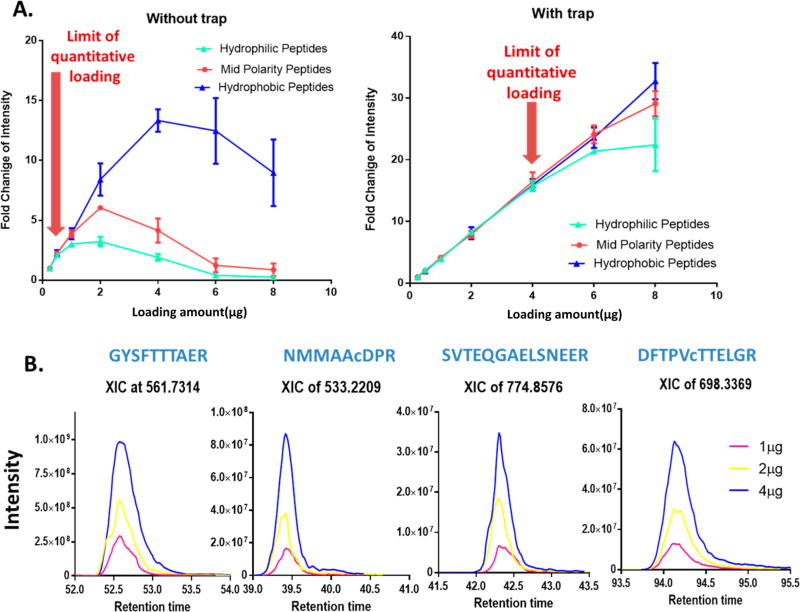Figure 3.
Enhanced depth and quantitative sensitivity by high-capacity loading on the large-ID trap. A human cell digest sample was used (N = 3/condition). Hydrophilic, midpolarity, and hydrophobic peptides refer to groups of 10 randomly selected peptides respectively eluting within the first 5 min, center 5 min and the last 5 min of the entire peptide elution window. (A) Mean normalized MS1 intensity in each group as a function of total peptide loading amounts without trap and with the large-ID trap. Optimal loading amounts (i.e., upper limit of the quantitative loading, without causing >20% peak broadening or intensity does not increase linearly with the loading amount) are 0.5 µg when without trap, whereas 4 µg with trap. The loading capacity appears to be determined by hydrophilic peptides and an optimal loading amount of 4 µg was chosen for this system. (B) Exemplifies the linear increase of intensity of peptide ion-currents with higher loading amounts, resulting in improved sensitivity.

